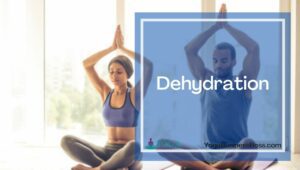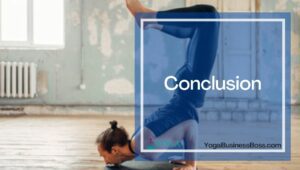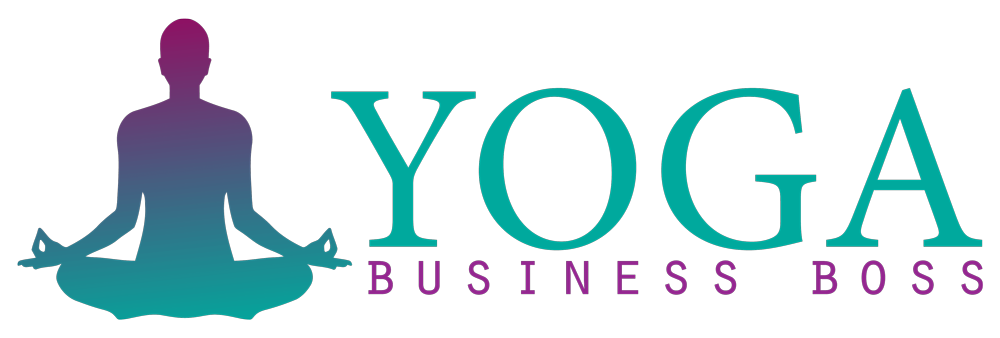Yoga, originally started in India, is the union of the mind and the body. Its routine includes different stretches, breathing techniques, and poses that help develops the spiritual and physical aspects of human life as explained in the ayurvedic scriptures. However, with all its beneficial purposes, yoga also can cause physical damage when done incorrectly. What could possibly go wrong with yoga?
The five disadvantages of yoga include the risk of injury, dehydration, overstretching of muscles, elevated blood pressure, and the risk of stroke. These scenarios may be avoided when poses are executed improperly, without professional supervision, and without consulting a doctor for those with pre-existing health conditions.
The stretching, balancing, and bending may look easy but in reality, it takes a lot of focus to do each pose. Others want to expedite the process and do everything as quickly as possible, ending in a terrible disaster for some. Let’s discuss further the disadvantages of yoga below.
Risk for Injury

Yoga, given its nature, increases your risk for injury when executed improperly. For instance, doing quick neck movements that could overstretch the vertebrae may lead to brain injury. Doing back arches without building up your back strength may irritate your intervertebral discs. Aggressive neck and head rotations can damage the arteries of the vertebrae, which could lead to inflammation and the formation of blood clots and heighten your risk of stroke.
Yoga involves head and neck rotation, body bending, back arching, and different awkward poses that require flexibility, stamina, bone strength, and muscle vigor to be able to safely do the poses with ease. Thus, it’s recommended for people who are physically fit.
Like other sports and exercise routines, it is necessary to do an initial warm-up and basic stretching before doing the routine to prepare the joints, muscles, bones, and tendons. The muscles in our body are tight and tend to shut off when at rest. A warm-up routine is the key to stimulating muscle stretch reflexes to avoid muscle cramps and tears and stretch the joints to prevent dislocation and fractures.
During pre-training warm-up, pay extra attention to vulnerable points such as the hamstring, shoulders, wrist, and back to ensure that all muscles are awakened and ready before the exhaustive physical activity.
The Cost To Heat A Yoga Studio
Dehydration

There’s another type of yoga called “hot yoga,” wherein the room’s heating level is increased to quickly warm up the muscles and help yogis stretch their bodies to their maximum and achieve optimum flexibility. However, as enticing and beneficial as it sounds, hot yoga poses health risks like dehydration.
Adding heat to the formula helps burn more calories and warms the muscles faster, but it can also lead to exhaustion, overstretching, and heat stroke. It is highly advised that you seek your physician’s approval before doing hot yoga. If you’re allowed to do it, make sure to practice extra precautions, such as slowly doing each pose with ease and don’t push your body to its limit. Keep yourself well-hydrated and take a few minutes of breaks once you feel parched and exhausted.
A Business License is Not Needed To Teach Yoga
Muscle Overstretching
Excitement and eagerness to learn complicated poses cause muscle overstretching which can cause strain to major muscles, especially for beginners. When the body is introduced to new poses and subjected to stretches that are unfamiliar to your muscle memory, they tend to overstretch, which leads to muscle pain and discomfort.
Naturally, yoga involves stretching. But pulling a muscle can be prevented by doing warm-ups before a session and slowly taking each pose. Beginners are given a threshold on poses they can do, so take time to learn each pose instead of doing it quickly. Listen to your body. When you feel discomfort and pain when you maneuver your body to imitate a pose, stop and try doing it slowly instead.
In the case of hot yoga, the risk of overstretching and pulling a muscle is higher than in regular yoga. Heat loosens the muscle and allows you to stretch tendons and muscles that usually are not flexible under typical circumstances. You may not immediately feel the pain due to heat and warmth, but the discomfort will kick in once the environment is no longer hot. Even yoga instructors and trained yogis experience muscle overstretching every now and then.
Elevated Blood Pressure

While it’s true that yoga helps reduce blood pressure, some inversion poses and heavy breathing increase blood pressure, such as the Breath of Fire Pose. Hot yoga also poses a high risk of elevated blood pressure, especially in people with a history of hypertension.
The best way to avoid the risk of elevated blood pressure is to consult your doctor before doing yoga to help guide you on what you can and cannot do, given your current health condition. You can still do yoga if you only focus on blood pressure-reducing poses such the Adho Mukha Shvanasana, Uttanasana, Pashchimottanasana, and Halasana poses.
Risk of Stroke
Injuries occur when yoga is done without professional supervision. When stretches and bends are executed improperly, vertebral damage or vertebral artery injuries may happen and lead to swelling and blood clots. When this takes place, nerve damage and stroke are possible scenarios, as per the National Center for Complementary and Alternative Medicine.
It is important to ensure that you are fit to practice yoga exercises before joining a class. If you have pre-existing health conditions, consult your doctor and ask for clearance to do yoga routines. If allowed, do not take the poses to extremes; always follow the process, and practice under the supervision of a professional yoga instructor to avoid permanent damage.
Conclusion

Yoga, as a meditation exercise, is a great way to stay fit and helps you find your center for improved mental and physical health. However, it also has disadvantages such as the risk of injury, dehydration, muscle overstretching, elevated blood pressure, and risk of stroke are eminent when done improperly, without professional supervision, and without consulting a doctor for those with pre-existing health conditions.
Yoga is meant to help us boost our physical and mental strength. Let’s do it right from the start to reap its benefits and avoid its disadvantages. Start by joining a yoga class supervised by a reputable professional instructor, enjoy and take each step and pose slowly, and be observant of your body.
The Main Design Requirements of a Yoga Studio
Frequently Asked Questions
A source discussed that people with existing conditions such as heart disease, diabetes, low blood sugar, and water retention and dehydration issues are at high risk during hot yoga sessions. They should consult their doctor before joining a hot yoga class.
Bikram yoga was developed from the traditional hatha yoga and incorporates heat into the practice to mimic the hot temperature in India. The Vinyasa is a more rigid type, a less strict routine that mostly depends on the instructor, and transitions are done flowingly.
To learn more about starting your own Yoga Business check out my startup documents here.
Please note: This blog post is for educational purposes only and does not constitute legal advice. Please consult a legal expert to address your specific needs.

Meet Shawn Chun: Entrepreneur and Yoga Fan
I’m a happy individual who happens to be an entrepreneur. I have owned several types of businesses in my life from a coffee shop to an import and export business to an online review business plus a few more and now I create online yoga business resources for those interested in starting new ventures. It’s demanding work but I love it. I do it for those passionate about their business and their goals. That’s why when I meet a yoga business owner in public at a studio or anywhere else I see myself. I know how hard the struggle is to retain clients, find good employees and keep the business growing all while trying to stay competitive.
That’s why I created Yoga Business Boss: I want to help future yoga business owners like you build a thriving business that brings you endless joy and supports your ideal lifestyle.

